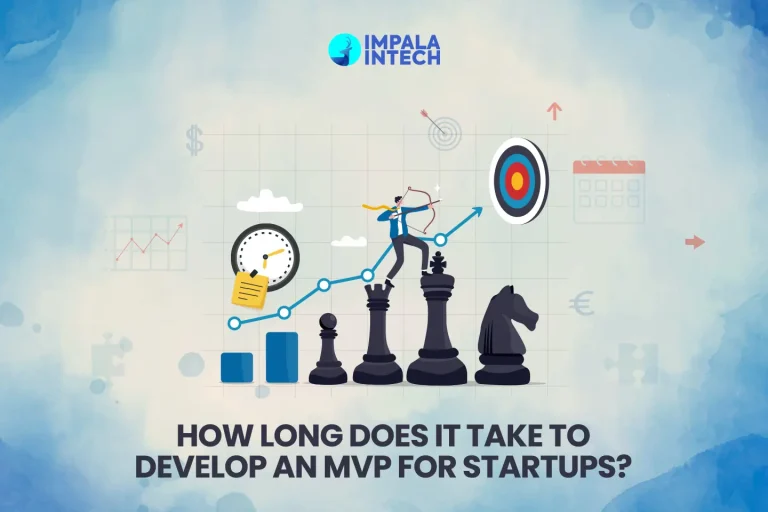
The current mobile app scenario can be summed up with the three following statistics:
- There are 6.3 billion smartphone users in the whole world
- There are 1.4 billion tablet users worldwide
- There are 2.87 million apps available on the Google Play Store Alone
With such a huge market, native mobile applications are a prime goal for every business and startup. In such a high-competition situation, you must have a time and resource-efficient option.
Low-code native application development is the answer, and Mendix is the best platform. Before we dive deep into the steps of creating native mobile apps with Mendix, let’s start with what Mendix native apps are.
What Are Mendix Native Apps?
Mendix native apps are built using the Mendix low-code development platform. Mendix offers Native Mobile Profile and Native Mobile Components that allow web apps to seamlessly integrate into different tablets and smartphones.
A great use case for the Mendix native app is IKEA. Their customers were highly hesitant to buy furniture through the mobile app cause no one wanted to buy furniture only to find out it didn’t match the room’s vibe.
To increase customer engagement, IKEA redesigned their app using Mendix Native Mobile Builder to support Augmented Reality (AR).
Now users can check types of furniture through IKEA Place to try out the furniture in their current room setting and then order what they like.
Steps To Build Native Mobile Apps With Mendix
You can build native mobile apps with Mendix in 5 easy steps.
1. Plan The Development Roadmap And Requirements
Like any other development, planning is the first crucial step before starting your development journey. With a good plan, you get to define the key features of your application while setting goals for what you wish to achieve with your app.
You can create your desired cross-platform application with Mendix when you have established a project scope. Since Mendix has low-code tools to support every development phase, including product ideation, you can plan a perfect app suitable for your target audience.
2. Define The Data Model
Now that the goals are set, it’s time to design and define your data model based on your outlined requirements. During this step, you will be defining the following:
- Data Attributes
- Data Entities
- Data Relationships
With Mendix, you can define the data model with no hassle whatsoever. Mendix allows you to create your data model with a drag-and-drop visual interface, making the process more intuitive and less tedious.
3. Design The User Interface (UI)
Visual appeal is one of the key elements of software since the look can make or break the first impression of your product. If making the right choice sounds tough, Mendix has your back.
You can use a WYSIWYG page editor and a drag-and-drop interface. The alternate solution is Mendix Studio Pro IDE, which operates on the Mendix Atlas UI Framework.
It’s fully open-source, responsive, and an extensive design language that allows you to take a design-thinking approach to developing your user interface.
You can find various starter templates for typical page patterns like
- Dashboards
- Data Viewer
- Searchable Lists
- Wizards
You can customize these templates to perfect the look and feel to suit your product idea and create a standard user interface across multiple platforms.
4. Add Functionality To Your Mobile App
Once you’ve completed designing the interface, it’s time to add functionality to the pretty design. However, doing so is very easy with Mendix since it offers you pre-built pluggable widgets and modules for adding standard features.
The modules and native widgets are open-source and available in the Mendix Marketplace. You can also find custom-made widgets and modules by the Mendix developers and Mendix community members, which is a plus if you want to add a more custom touch.
If you have advanced coding expertise, you can add more complex features by building them with HTML, CSS, and JavaScript.
5. Test And Deploy Your Native Mobile Application
When developing native mobile apps, testing is a vital part of the process. You want to deliver a stable product that will not interrupt the User Experience with bugs or glitches.
Of course, Mendix can also cover all your testing and deployment needs. Mendix has many pre-configured tools to help you test Mendix native apps on different platforms. These tools include:
- Soap UI
- Selenium IDE
- UnitTesting
These tools let you test acceptance, microflows, and service integrations. Once your app ticks all the right boxes, you can launch your native mobile app for iOS and Android platforms.
These are the different deployment scenarios that Mendix supports:
- Local Machine
- Mendix Cloud
- SAP Business Technology
- Docker Containers
- Azure
- Cloud Foundry-Based Platforms
- Personally Configured Server
Benefits of Building Native Mobile Apps With Mendix
1. The Development Platform Is Unified
With Mendix, you can build your native mobile app for both iOS and Android platforms at the same time using Studio Pro Modeler.
As a result, you don’t need to hire a team of full-stack developers with extensive coding experience or learn any complex programming language to create your application. A Mendix developer will do just fine.
Many components are already built based on React Native, and you can utilize them for creating your application. These components get converted into platform-specific native components when you deploy the app.
2. The Performance Is Better, And You Can Reuse Codes
As mentioned earlier, Mendix components can be converted into platform-specific native components. These components include
- Image View
- Grid View
- Text View
The React Native bridge handles the conversion, executing the commands from the JS thread of all frontend components to the device-level Native OS thread.
The bridge acts as an interface that converts React Wrapper components into platform-specific native components without causing any loss in performance.
This can also allow the reuse of existing components that can be reused in different parts of the application, which reduces the hassle of adding more modules while increasing overall performance.
3. It’s Cost Efficient And Easy To Maintain
Since the codebase is unified, it’s much easier for Mendix to be maintained and fixed when a bug occurs. All developers working with Mendix must maintain a single IDE/ modeler and Development Platform, reducing licensing and hardware costs.
What’s better is you don’t need separate teams to work on and maintain Android and iOS apps; your Mendix team can take care of it effortlessly.
Mendix handles code tracking and merging with a team server, so it’s very easy to maintain a complex Native Mobile Application codebase even with a small team of Mendix native builders.
4. The Apps Are Easily Scalable
Since there’s no specific requirement for creating applications using Mendix, you can extend the application’s functionalities however you please.
The development is highly flexible, and so is the scalability.
5. The Apps Are the Future, Proof With Tons of Community Support
We all remember the public reaction and popularity React Native received when it went public. It’s safe to say that React Native isn’t going away anytime soon with the robust community support, making Mendix app development completely future-proof.
6. Enables Visual Model-Driven Development
With a visual model-driven development approach in the Mendix platform, you can pick and implement the most suitable elements for your application without worrying about coding.
That way, your intuitive imagination and creativity can shine without the lack of coding knowledge being an obstacle.
7. Allows Collaborative Development
Collaboration between business and IT teams is the road to the future since business insights and ideas are just as important as the skills of software developers.
Mendix, as a software development platform, harbors collaboration between the two with many collaboration tools support and no-code ideation features.
It can help non-technical people to convey their ideas in a prototype form using Mendix, which is great for project managers and other business stakeholders.
8. Compatible With AI-Assisted Development
Mendix allows AI-assisted development to help you during different phases of native mobile app development. It can reduce manual labor and optimize the software development lifecycle with minimal human errors.
9. Faster Delivery Time
With Mendix, you don’t have to create anything from scratch unless you try to implement custom features and logic into your product. It saves much time during the development cycle and enables faster delivery time.
Bonus Tips For Building Native Apps With Mendix
Here are a few bonus tips if you choose to build native mobile apps with Mendix:
- Keep the user experience consistent across all platforms
- Ensure simplicity and ease of use for your apps
- Use pre-built connectors to integrate the app into different platforms
- Use Mendix’s pre-built analytics tool to monitor your app performance constantly
- Test on multiple devices to ensure complete compatibility
- Optimize application performance to suit native device capabilities
To Wrap It All Up
Cross-platform applications used to be a nightmare in terms of development. But with the arrival of Mendix, creating native mobile apps has become much easier. The straightforward development process can help you deliver the best version of your idea through a full-fledged application.
Want to get started right away? Impala Intech is here to help you build native mobile apps with Mendix and scale your business to the next level with peak low-code development excellence.
FAQs
Mendix uses native programming languages like Swift for iOS and Java/Kotlin for Android to generate native mobile apps.
Yes, Mendix native mobile apps can integrate with backend systems through APIs, allowing seamless data exchange and integration with existing systems.
Yes, Mendix native mobile apps can utilize native device security features, such as biometric authentication, to enhance the app’s security.
Yes, Mendix native mobile apps can utilize native device storage to store and manage data locally.
Yes, Mendix native mobile apps can leverage native push notification services to send notifications to users’ devices.








